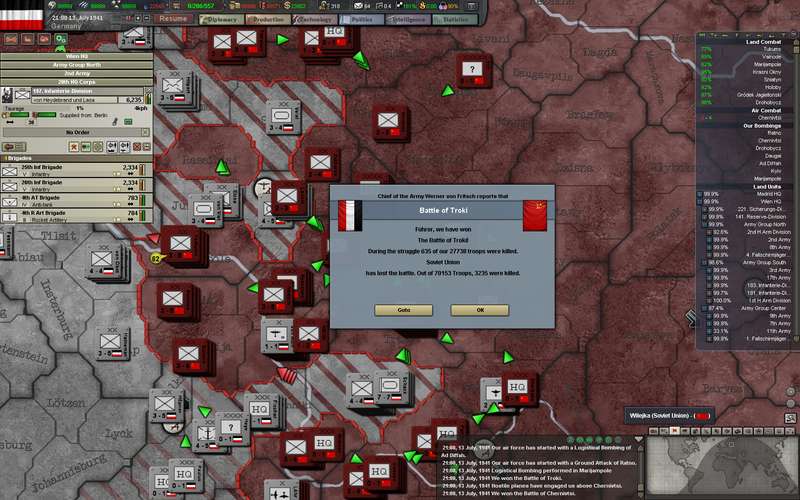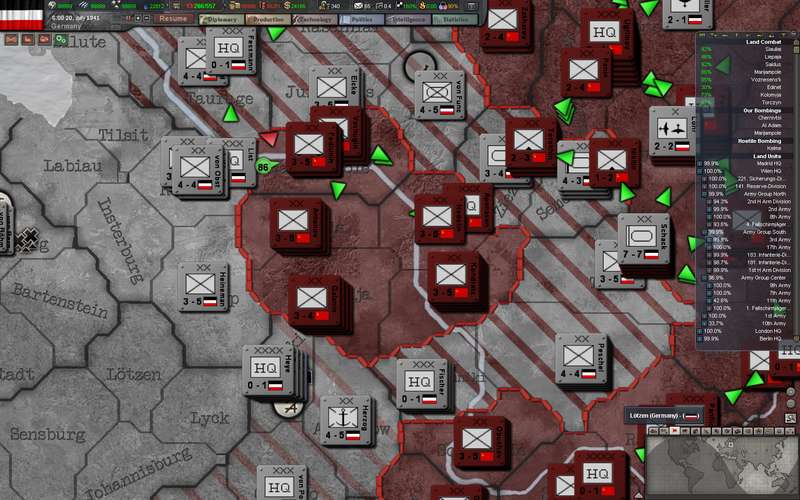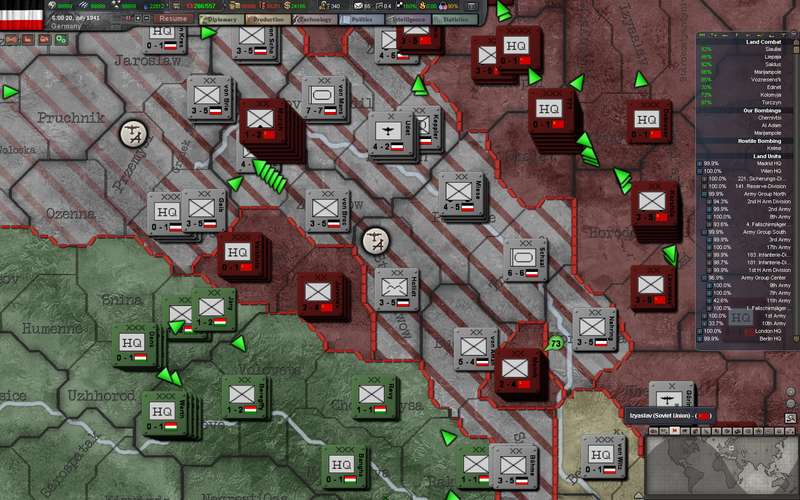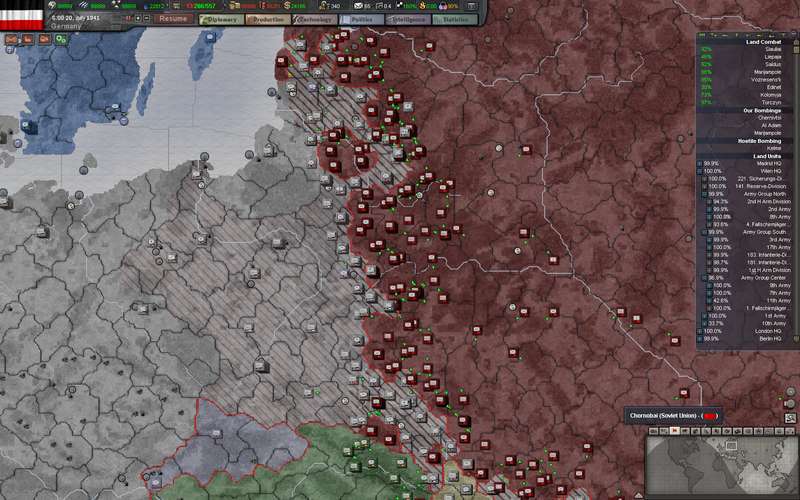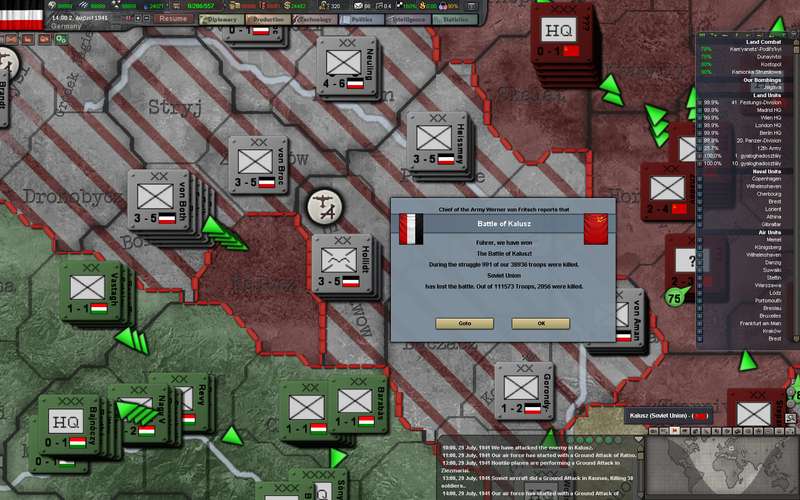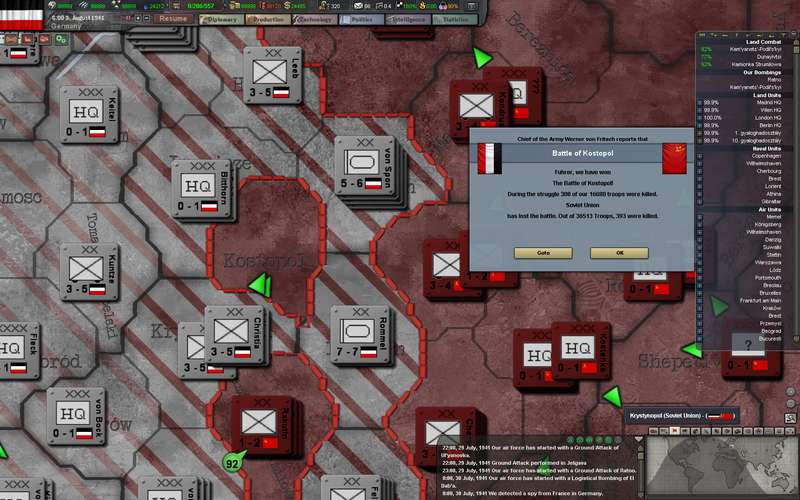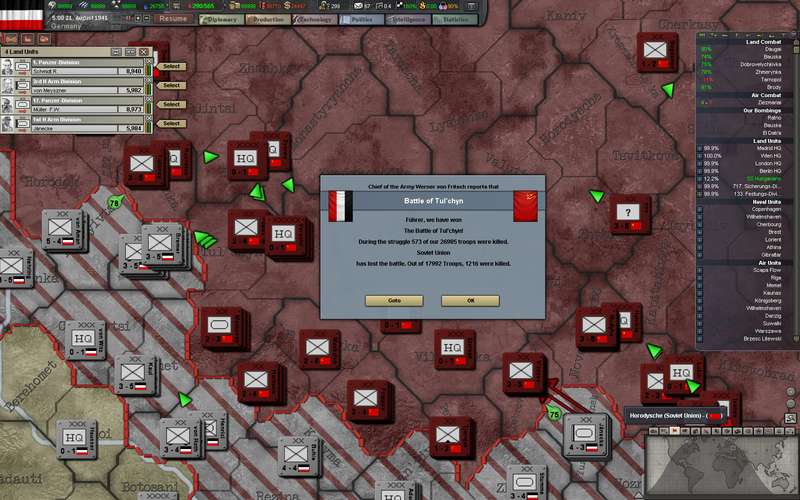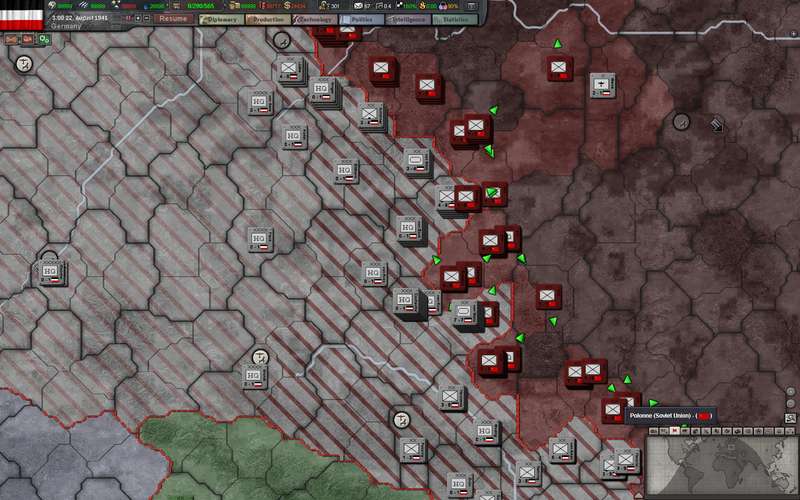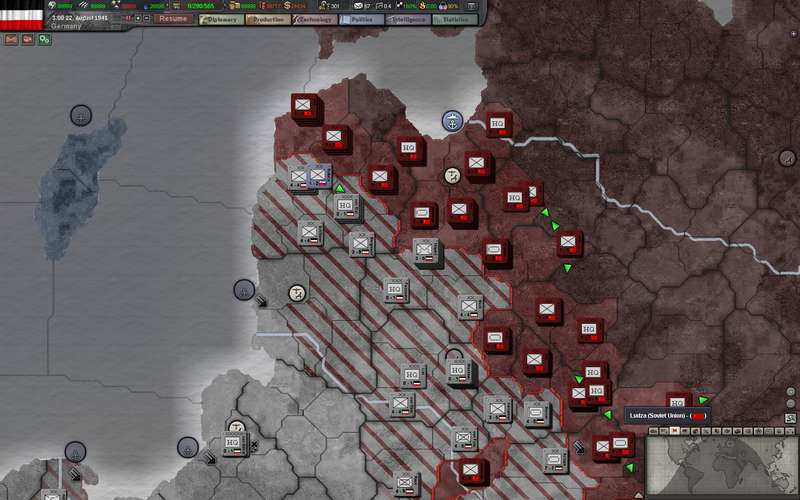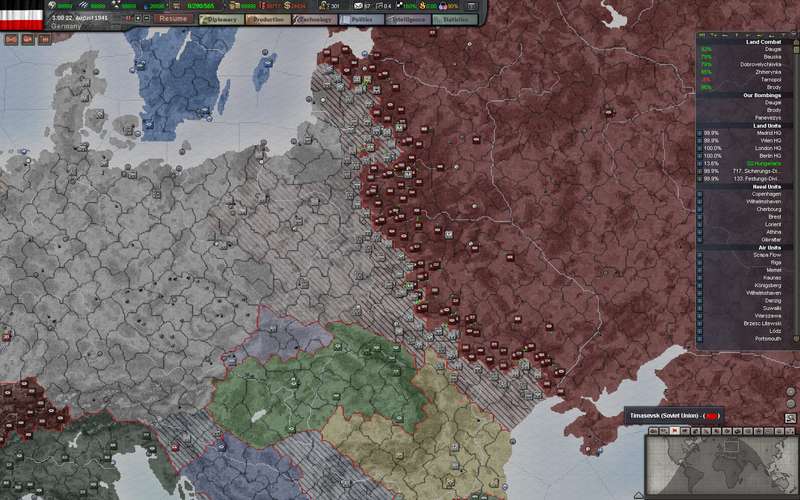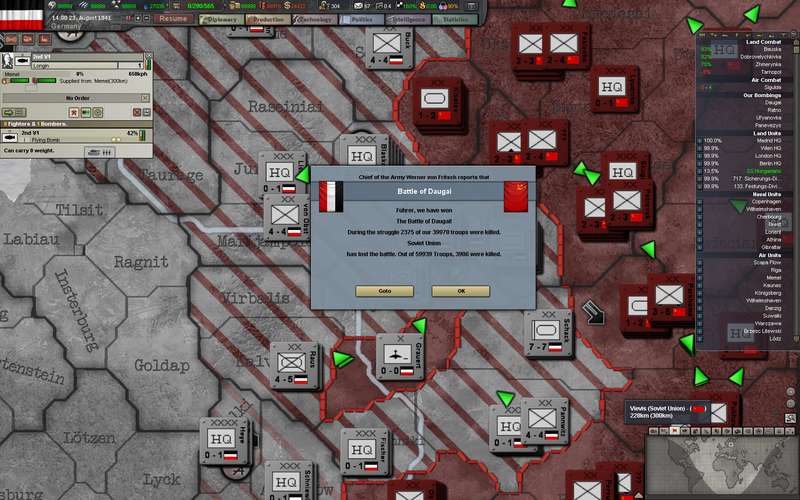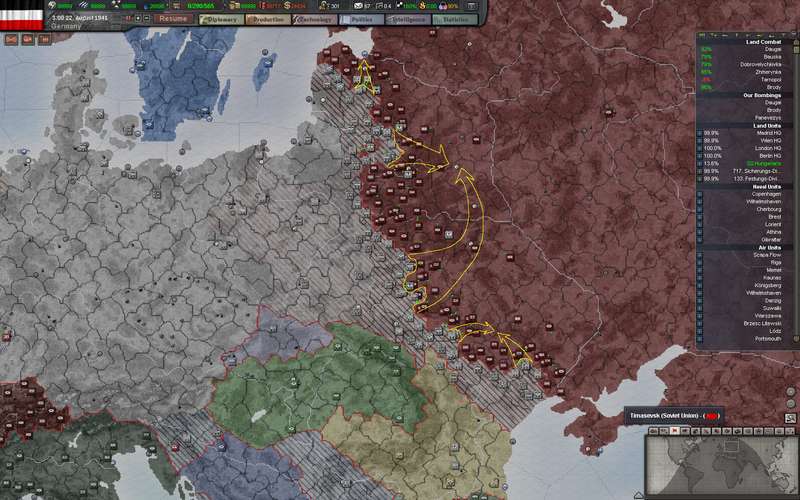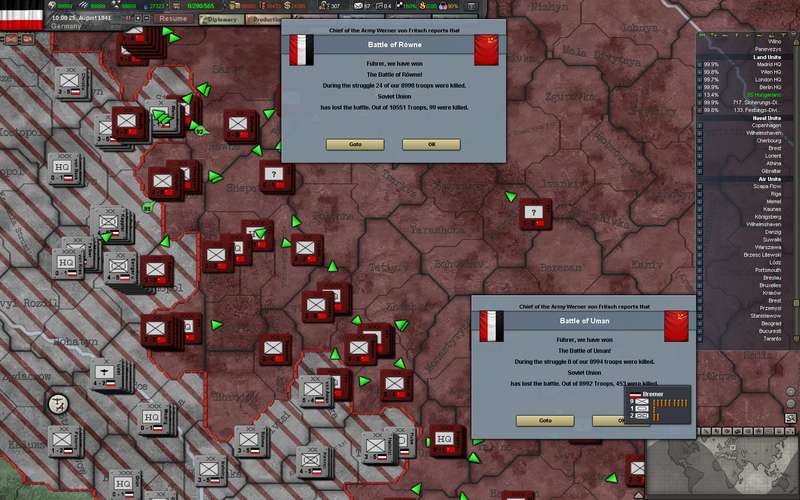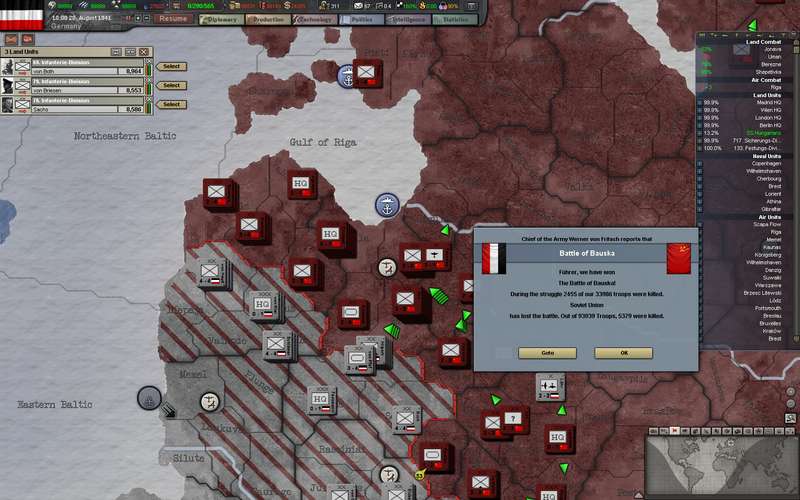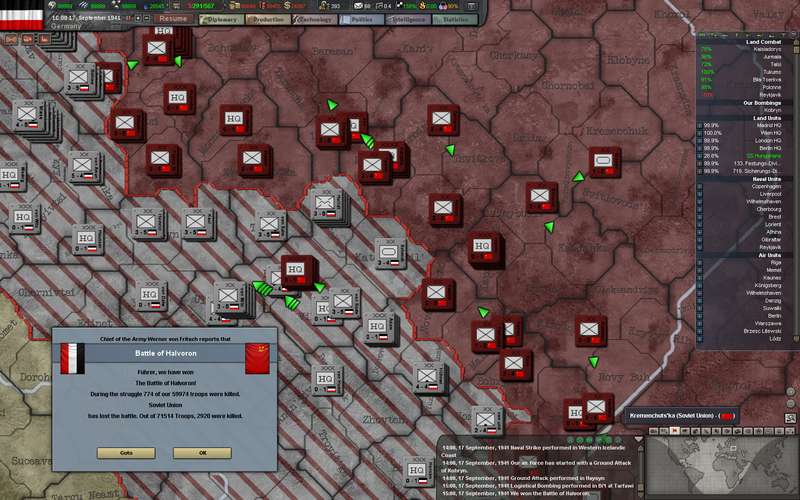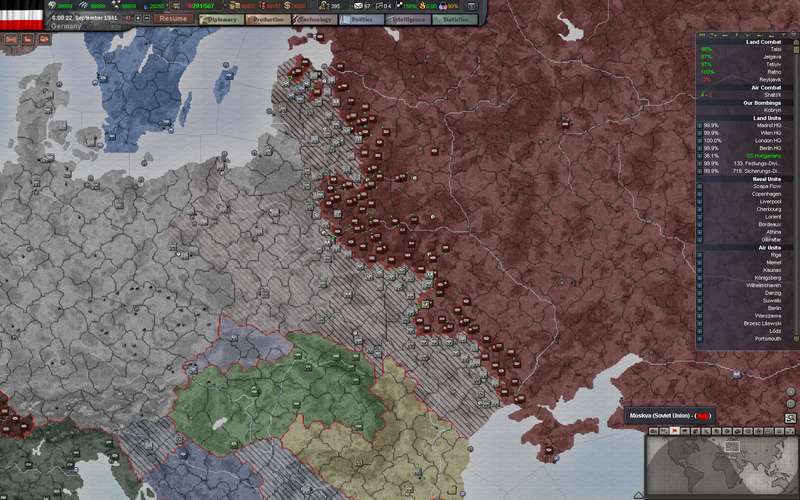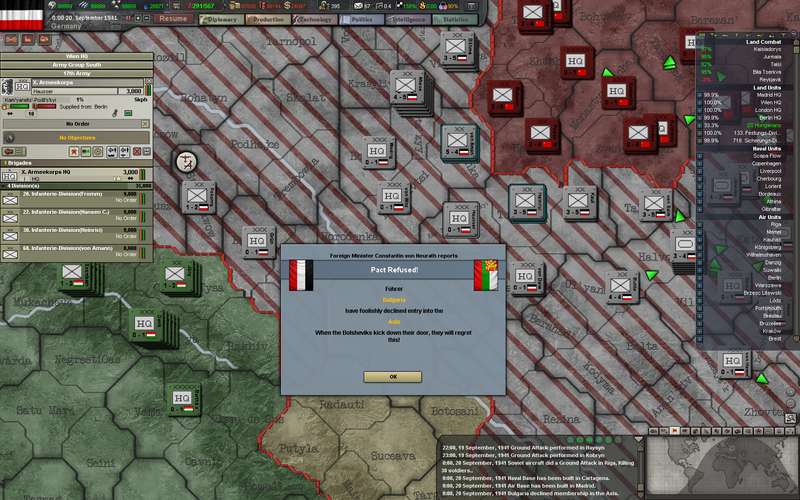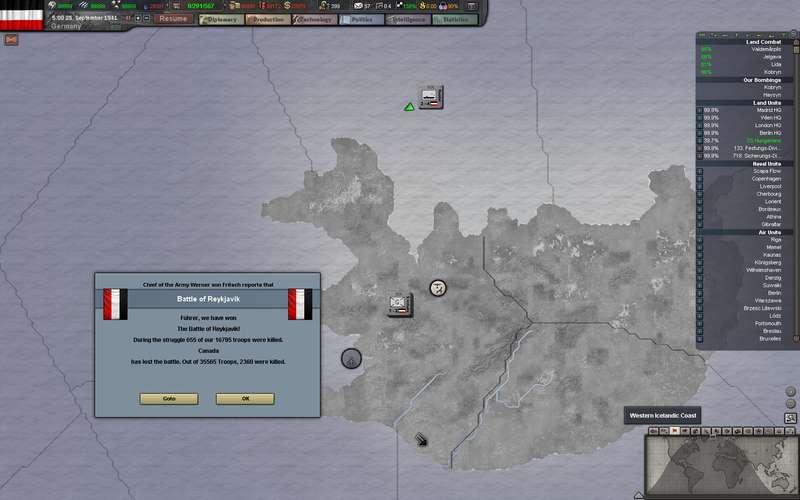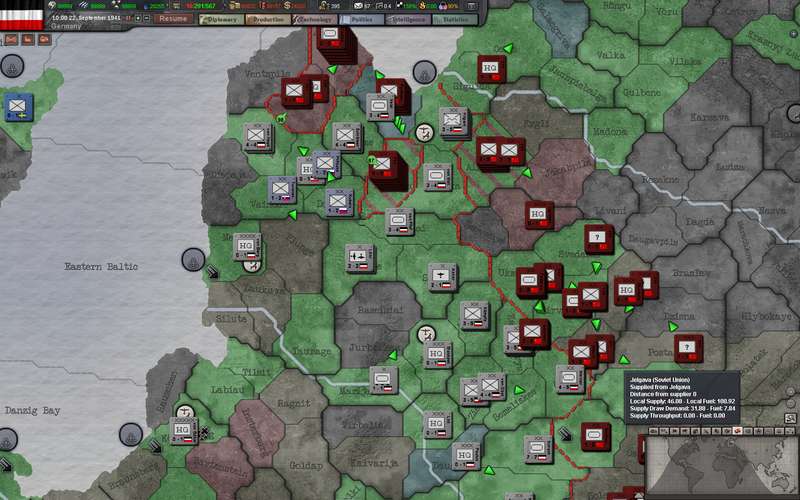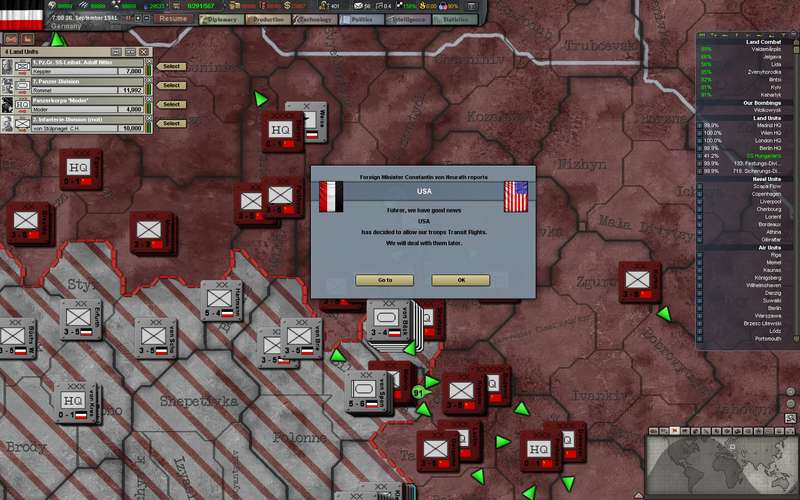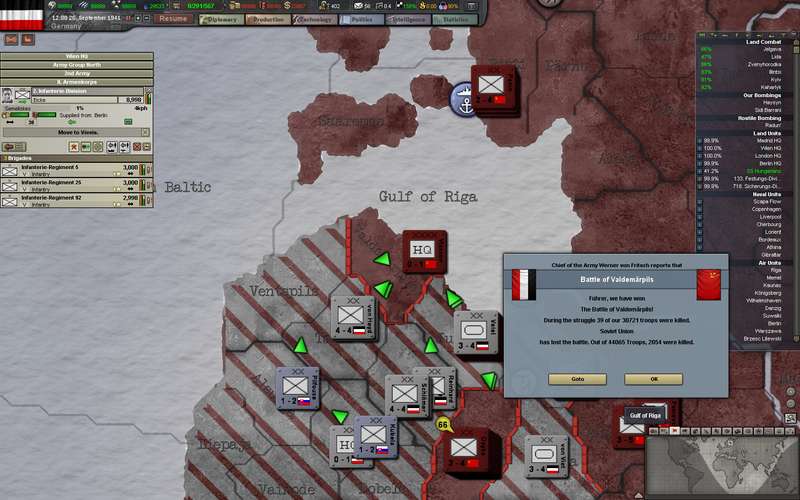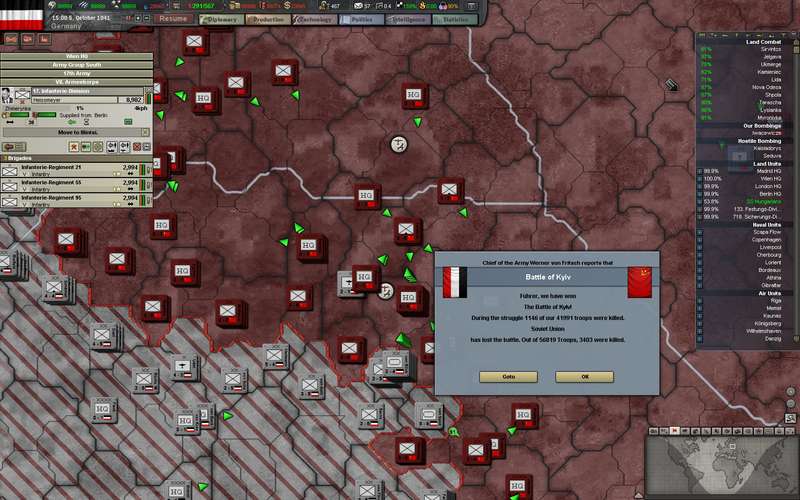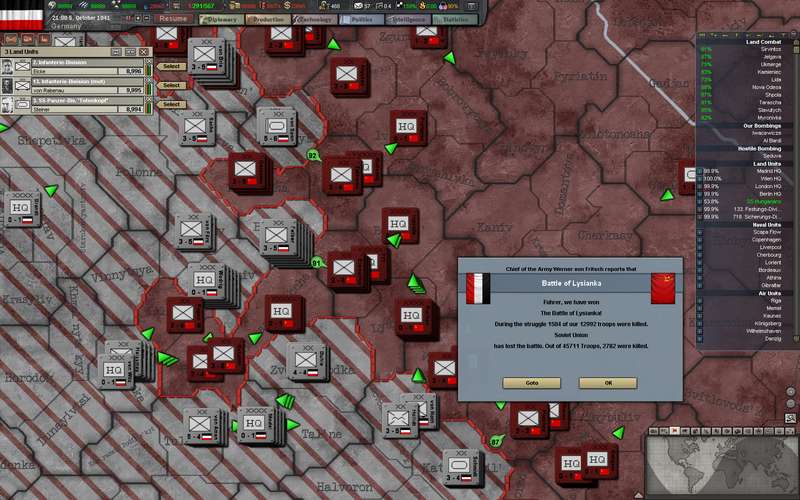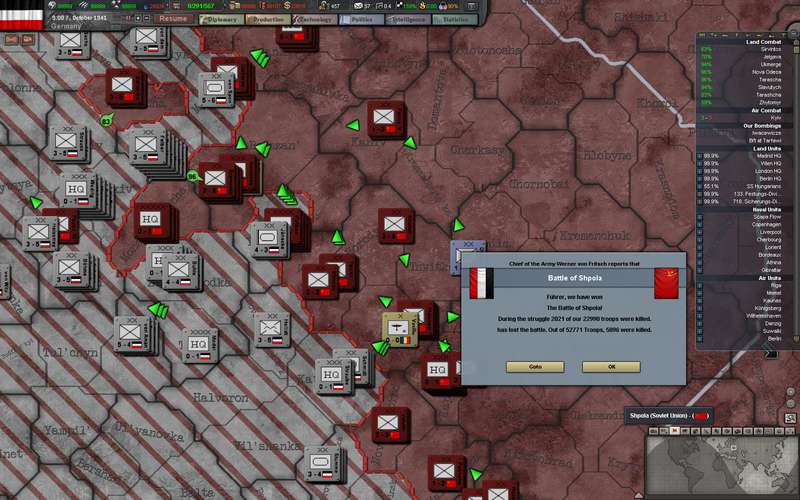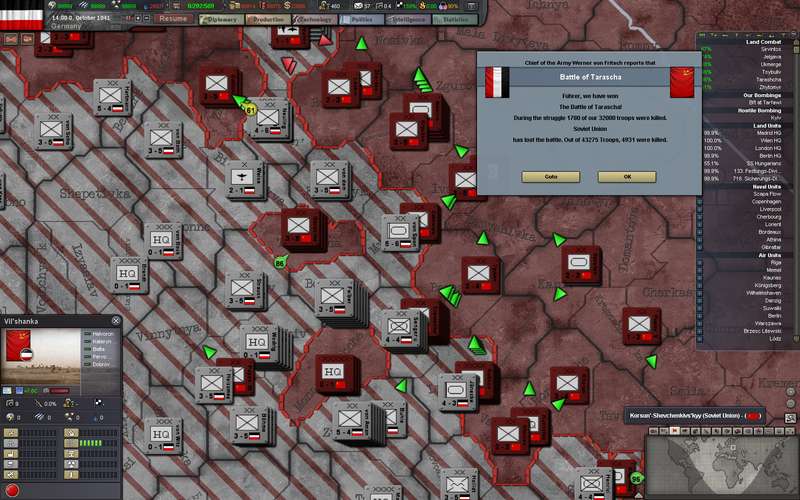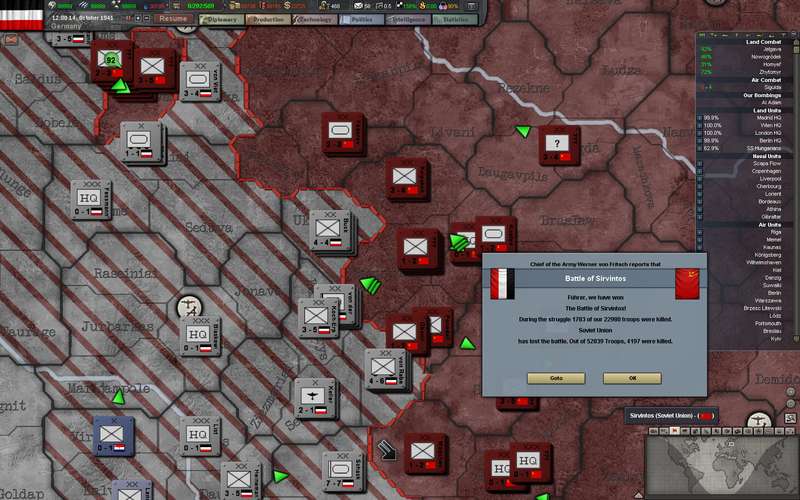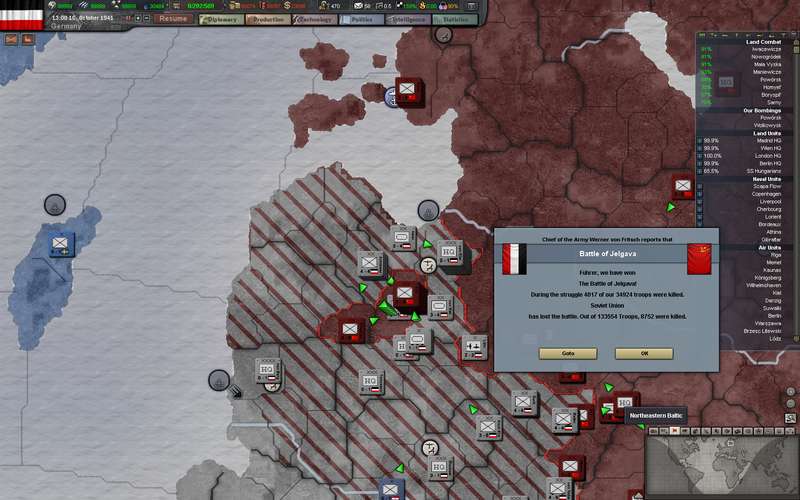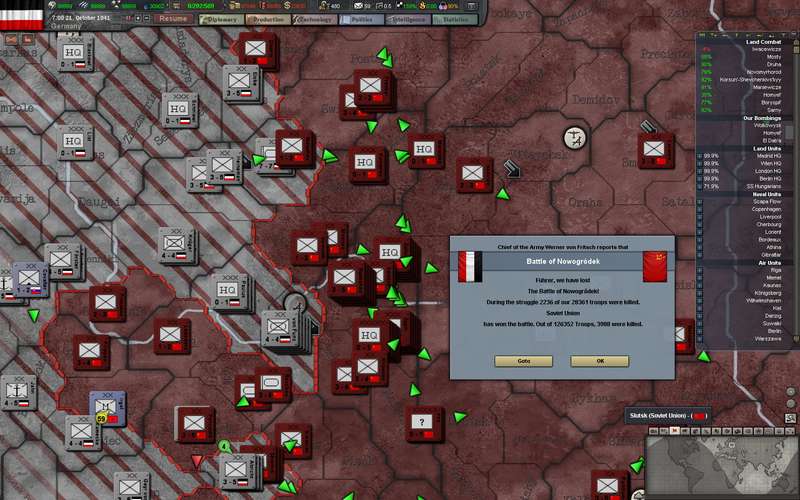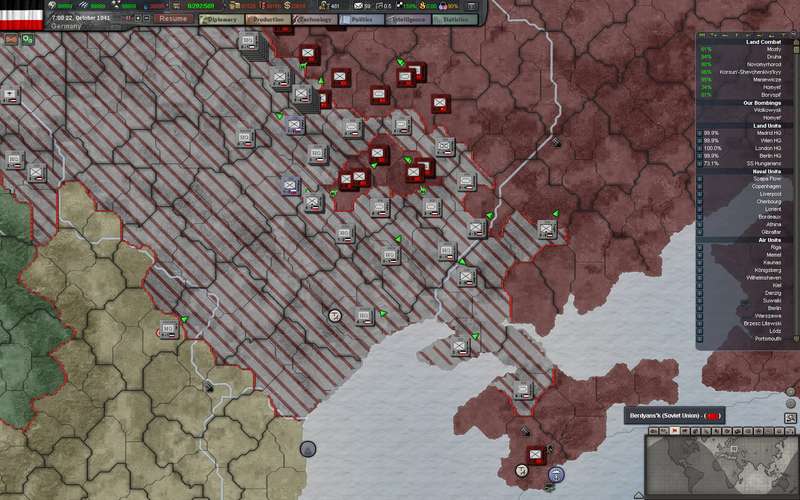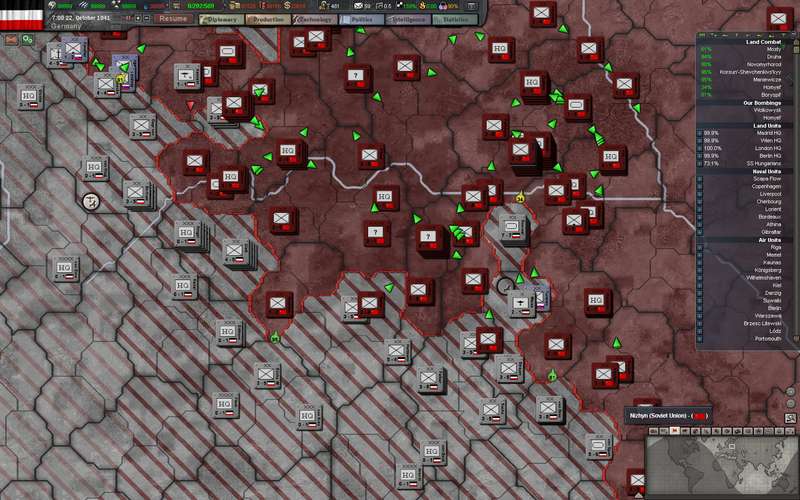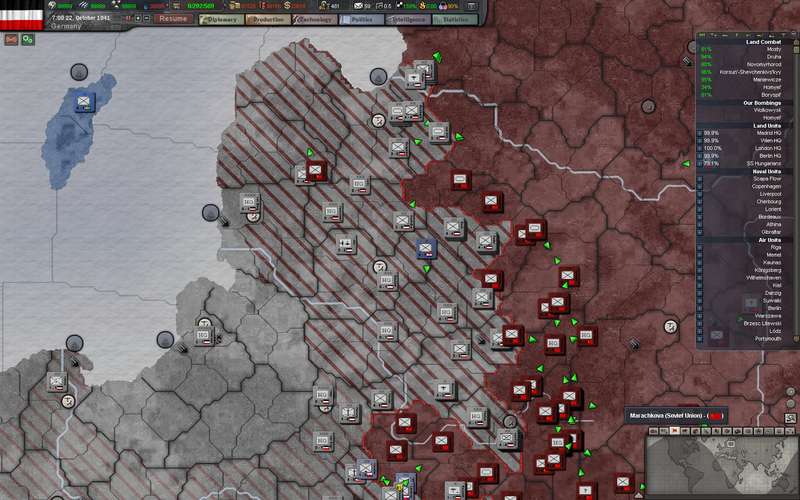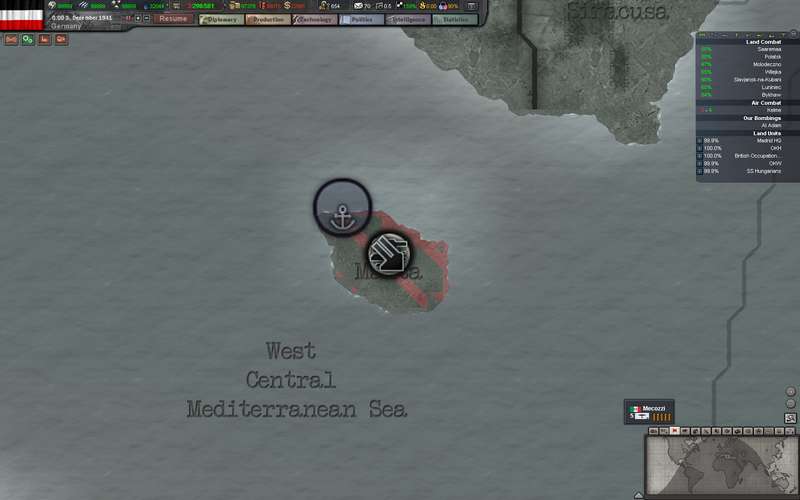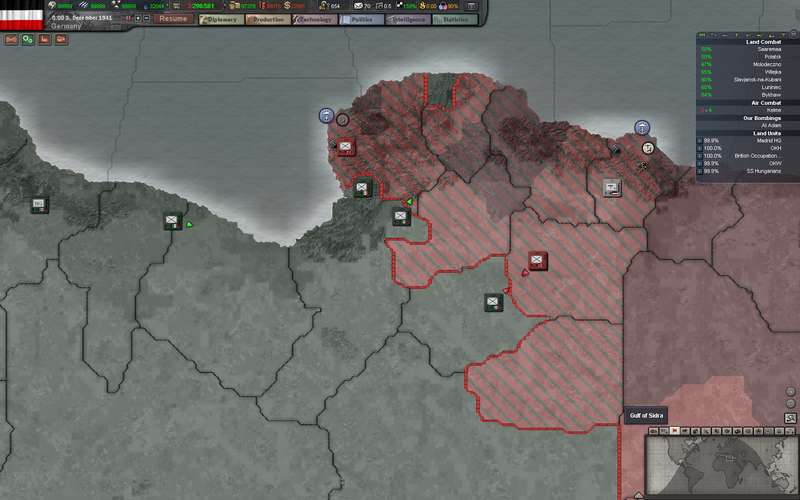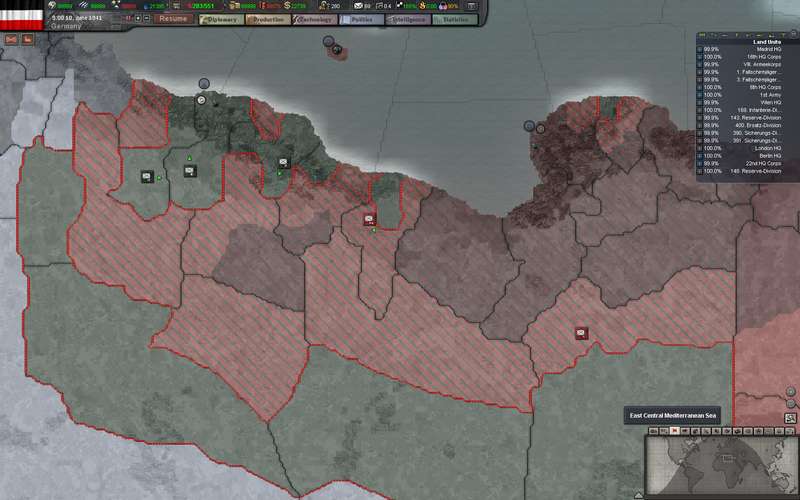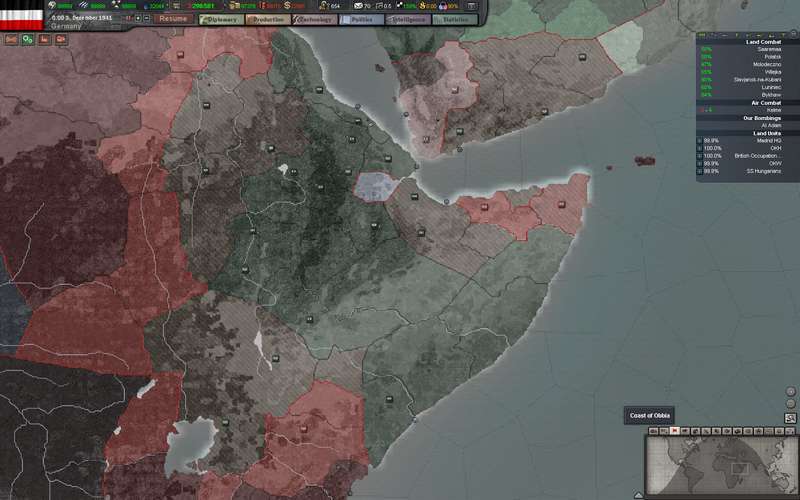First full HoI3 campaign. Started in 1936 "Road to War" and performed a few extra strategic moves to compliment my choice of a favorable '41 invasion of the Soviet Union.
Germany 1936 AAR (January 1, 1936-January 1,1948)
AAR Start Date: 03:00 22 June, 1941
Difficulty: Normal
Fow: On and Off
I began with a few strategic alterations. Carriers and Strategic Bombers were added to the German research program at the cost of CAS and TAC with limited light naval (save submarine) research. Took half of SPAIN (Madrid and all but Tarragona of the eastern coast) during the Civil War. A short political mess for AUSTRIA and the CZECHS. POLAND (Total Exploitation) for a road test. Blitzed the WEST (Collaboration Gvt. except Occupied France) through winter of '39-'40 and jumped aboard ENGLAND (Collaboration Gvt.) via the host of paras in Southampton for a quickly gobbled Isles. DENMARK(Annexed) after a short summer for a clean map. Back in the east in the autumn for a bit of YUGOSLAVIA (Total Exploitation) and her unexpected partner in stupidity RUMANIA(Puppet). Followed by a back-door landing near Athens to help the Italians finish their year-and-a-half war with GREECE(Military Government).
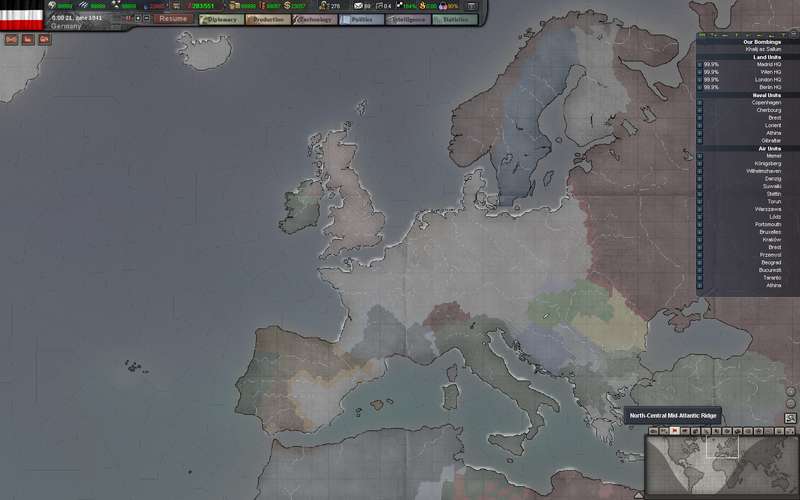
With Gibraltar occupied by Germany and Italy's forces keeping the scant remaining British busy in North Afrika I got bored of fighting a secondary theater war. On to the the fun stuff!
Now that the west is pacified (save the Canadians) and the massive Deutsches Wehrmacht has nothing to do, it is time to set out on the entire purpose of this war...RUSSIA!!!
Giving myself odds of 3:2 in this one.
Odds are roughly (according to intelligence reports from our 8 spies in SU) 525 German Brigades to 559 Russian brigades. Minus our non-front reserves and garrisons: 400 vs. 500-550?
Changes from previous strategies include a more indirect engagement policy with focused thrusts after feeling out the enemies weak flanks, press hard for profitable pockets and seek to outright destroy the Red Army in a serious battle of encirclement.
OOB:Wien Theater HQ with three (North, South and Center) Army Group HQ each including no less than three armies, ex.(3rd, 17th, 6th). Armies are made up of at least three corps (several have as many as five, two have just two), Corps are constituted of NEVER less than three divisions which are NEVER less than three brigades.
The strategic situation 27 hours before the start of the war.
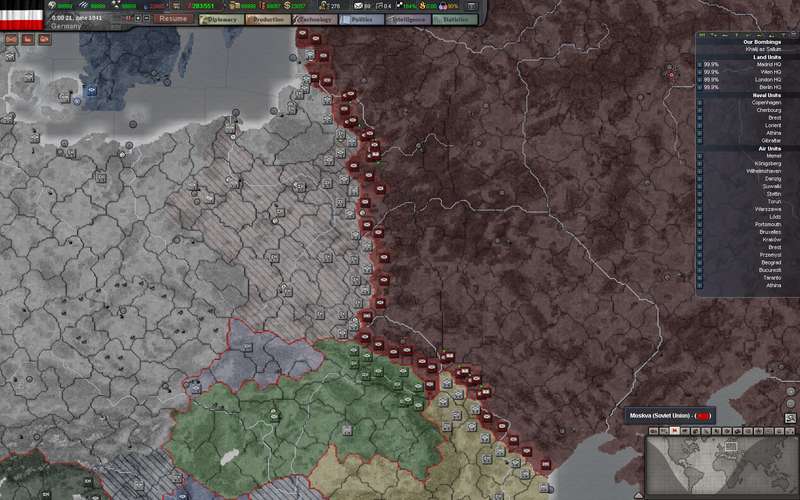
Army Group Center

Army Group North
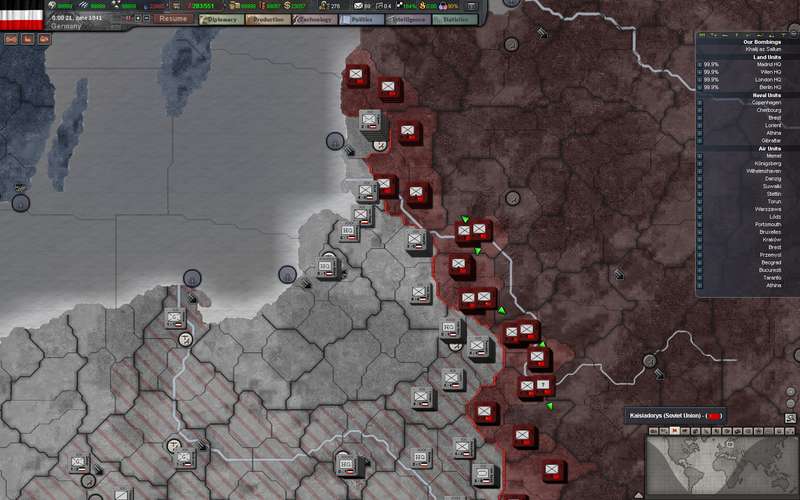
Army Group South

Sorry about the haphazardness of this AAR. I will improve fo' sho! I had a good one going and the log-out killed it when I went for a smoke. So frustrating!
Germany 1936 AAR (January 1, 1936-January 1,1948)
AAR Start Date: 03:00 22 June, 1941
Difficulty: Normal
Fow: On and Off
I began with a few strategic alterations. Carriers and Strategic Bombers were added to the German research program at the cost of CAS and TAC with limited light naval (save submarine) research. Took half of SPAIN (Madrid and all but Tarragona of the eastern coast) during the Civil War. A short political mess for AUSTRIA and the CZECHS. POLAND (Total Exploitation) for a road test. Blitzed the WEST (Collaboration Gvt. except Occupied France) through winter of '39-'40 and jumped aboard ENGLAND (Collaboration Gvt.) via the host of paras in Southampton for a quickly gobbled Isles. DENMARK(Annexed) after a short summer for a clean map. Back in the east in the autumn for a bit of YUGOSLAVIA (Total Exploitation) and her unexpected partner in stupidity RUMANIA(Puppet). Followed by a back-door landing near Athens to help the Italians finish their year-and-a-half war with GREECE(Military Government).

With Gibraltar occupied by Germany and Italy's forces keeping the scant remaining British busy in North Afrika I got bored of fighting a secondary theater war. On to the the fun stuff!
Now that the west is pacified (save the Canadians) and the massive Deutsches Wehrmacht has nothing to do, it is time to set out on the entire purpose of this war...RUSSIA!!!
Giving myself odds of 3:2 in this one.
Odds are roughly (according to intelligence reports from our 8 spies in SU) 525 German Brigades to 559 Russian brigades. Minus our non-front reserves and garrisons: 400 vs. 500-550?
Changes from previous strategies include a more indirect engagement policy with focused thrusts after feeling out the enemies weak flanks, press hard for profitable pockets and seek to outright destroy the Red Army in a serious battle of encirclement.
OOB:Wien Theater HQ with three (North, South and Center) Army Group HQ each including no less than three armies, ex.(3rd, 17th, 6th). Armies are made up of at least three corps (several have as many as five, two have just two), Corps are constituted of NEVER less than three divisions which are NEVER less than three brigades.
The strategic situation 27 hours before the start of the war.

Army Group Center

Army Group North

Army Group South

Sorry about the haphazardness of this AAR. I will improve fo' sho! I had a good one going and the log-out killed it when I went for a smoke. So frustrating!


